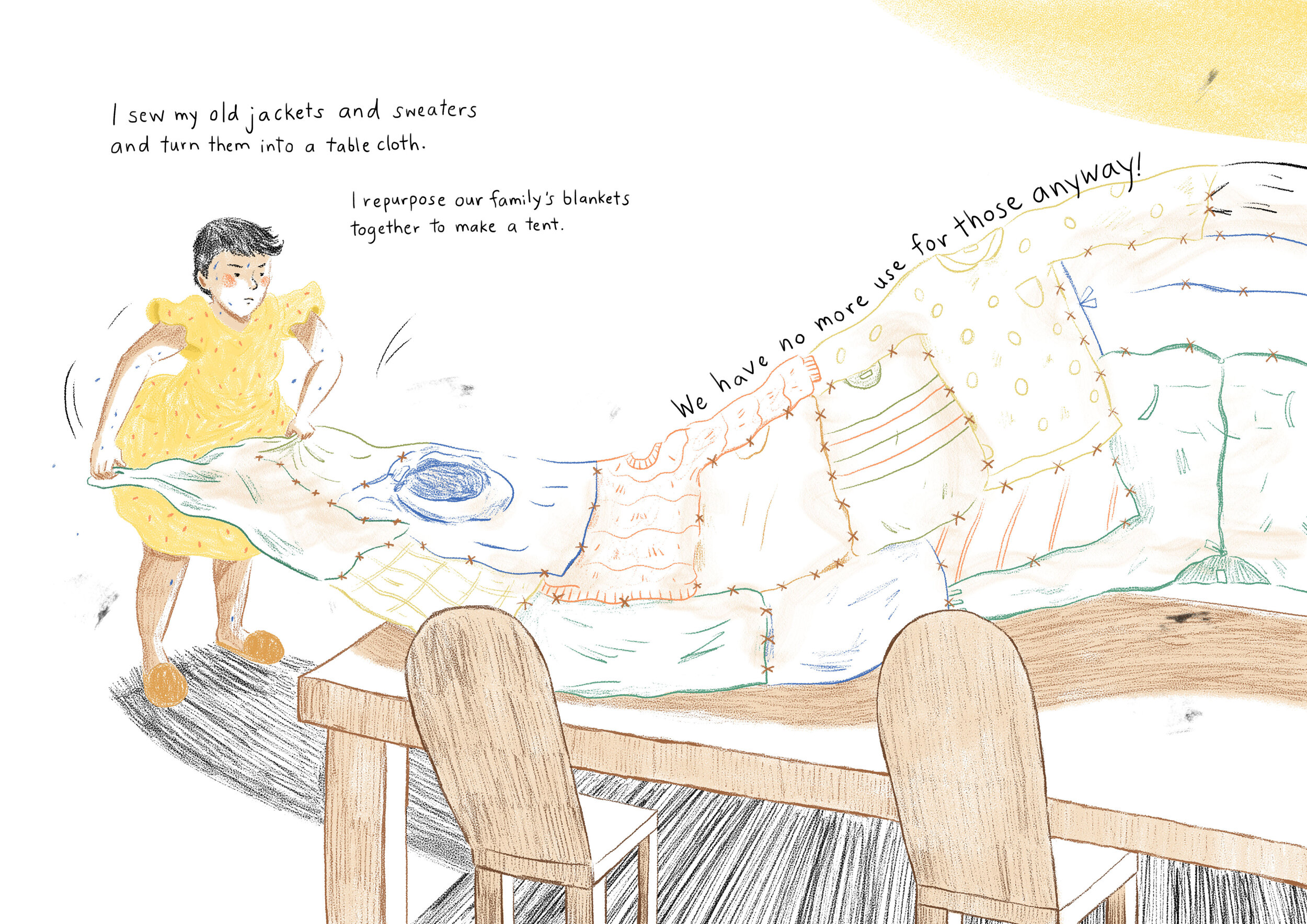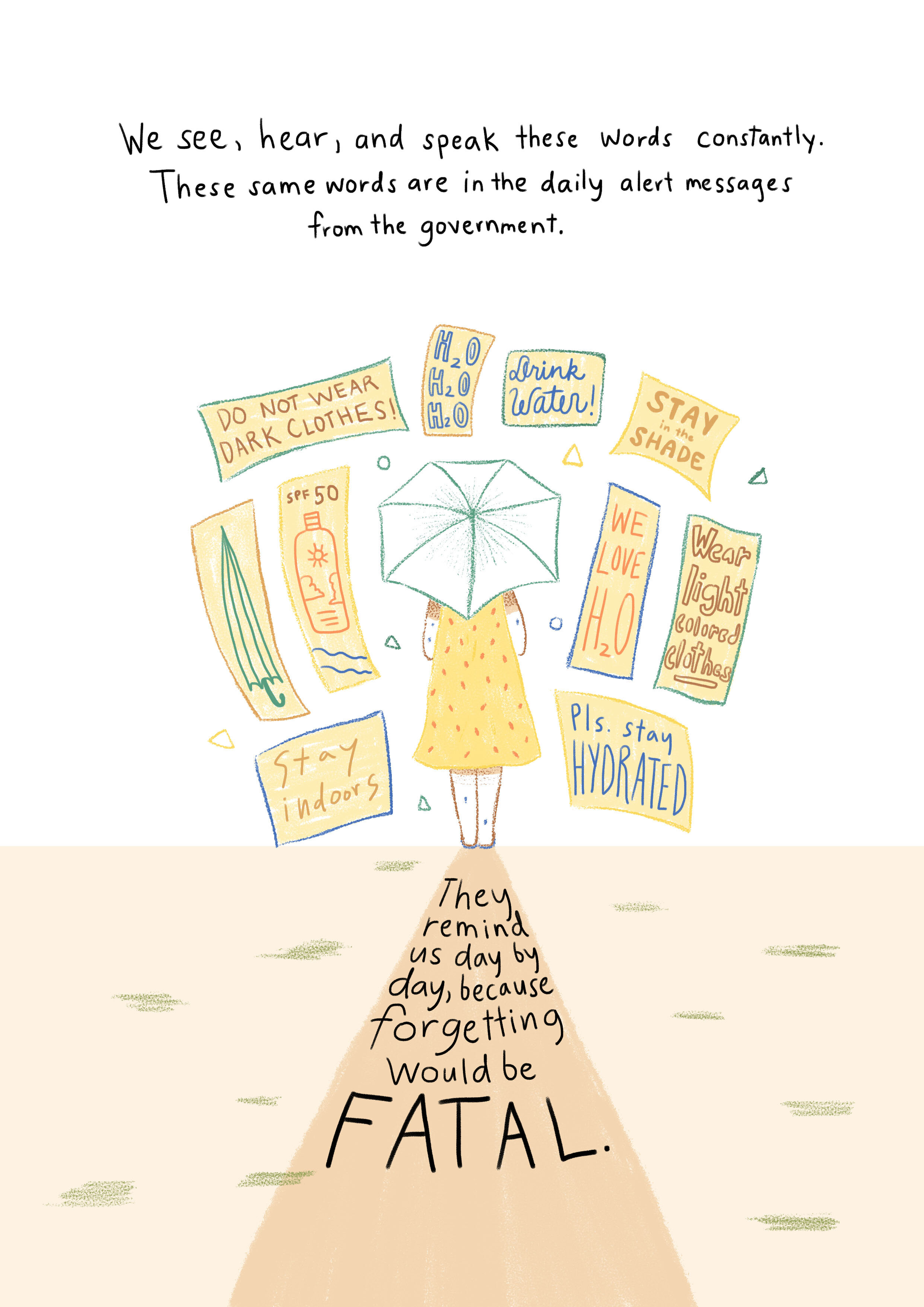Tiny Tutubi Story II: Too Hot for a T-Shirt
Written and illustrated by Arli Pagaduan, edited by KB Meniado, released April 2020
The Tiny Tutubi Story II: Too Hot for a T-Shirt was originally set in Antarctica. But my editor KB Meniado said that if we set it locally – specifically Baguio City – it would be more relatable. I thought that if I wrote the story in Antarctica, the impact would be more powerful, because would we even live to see that day when it would be too hot to wear a t-shirt in the Antarctic? And we haven’t been there too at all (but someday, I hope I can visit it too and see the penguins, seals, and the mighty icy blue glaciers). I’m glad I went with KB’s suggestion! And so the story’s specifics went through some changes, but I believe it became more relevant to set it in a city that I’ve been to since childhood.
When I think of Baguio, I think of the tall pine trees and pinecones decorating the ground. I think of the cool weather, the fresh air, the foggy mornings, the kind people, the feeling of safety, and the promise of possibilities… It’s truly a respite from the city hustle and heat.
Now, Too Hot for a T-Shirt asks the question: What if it won’t be as cold anymore in Baguio City in the next decades?
What if wearing a t-shirt won’t even suffice to help us live through the heat? The climate crisis has been upon us for recent years, yet we are still burning fossil fuels, we are still cutting down our trees, we are still polluting our oceans, seas, and rivers.
If there’s too much greenhouse gases in the atmosphere, it is likely that our planet will be warmer, together with our oceans. Glaciers may melt, leading to rising sea levels.
So, who knows? It could be possible that it’d be too hot for a t-shirt in Baguio. People would have shorter hair. People would wear the most comfortable and breezy clothes there are. There’d be less trees and more buildings.
The story may pose a probable outcome if we, individually and collectively, do not do our part to decrease our carbon footprint.
However, I did not want it to feel hopeless. So I made the character live that reality in a dream, and that dream was all too real that she realized her part to play after waking up. Realizing that we’re running out of time, the dream moved her to act.
Imagination is endowed to us. We can use it to conjure a reality when we’ve reached the point of no return and when living has been replaced by surviving.
It is a terrifying thought. It is a possible future. And if we do not get to live to see that, then our children and their children will. A more broken world isn’t something to leave to the future generation, expecting that salvation is to be found years from now when the answer has been with us all along – we just didn’t heed the call, because we’re still comfortably wearing our t-shirts.
After imagining comes our innovations, our ideas, our contributions in whatever field we may be in. Conservation and protection efforts call for a multi-disciplinary approach. The climate crisis is not just an environmental issue but also ecological, social, cultural, political, economical, medical, communicational, and behavioral.
I hope that the emotions we feel when we talk about our planet and see footages and photos of it will be channeled to action. We’re to be responsible stewards. We’re human beings. We’re neighbors with all the other creatures of Earth.
What happens to one dragonfly in the tropics happens to one whale in the Pacific. What happens to a tree in the forest in the Philippines happens to a young man in an office somewhere across the globe. We’re all connected, so we need to take care of each other. People of all walks of life have parts to play.
What we have here may be finite, but hope is undying.
I know we can do it.
Because we’re already doing it.
Today, April 22, 2020, marks the 50th Anniversary of #EarthDay. Happy Earth Day, everyone, today and always.
























